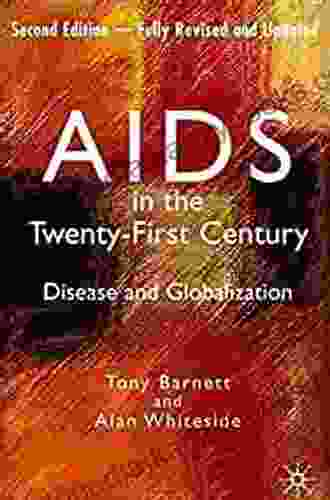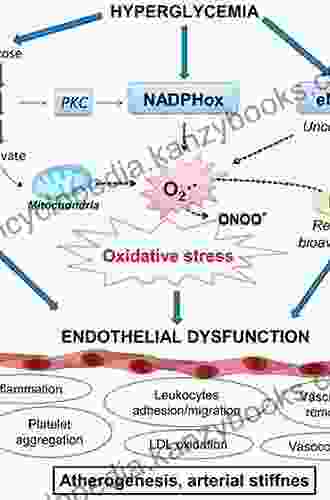Bioavailability and Function: Oxidative Stress and Disease

Oxidative stress is a major risk factor for a number of chronic diseases, including cardiovascular disease, cancer, and neurodegenerative disFree Downloads. Oxidative stress occurs when there is an imbalance between the production of reactive oxygen species (ROS) and the body's ability to detoxify them. ROS are produced as a byproduct of normal cellular metabolism, but they can also be generated by exposure to environmental toxins, such as cigarette smoke and air pollution.
5 out of 5
| Language | : | English |
| File size | : | 13197 KB |
| Screen Reader | : | Supported |
| Print length | : | 472 pages |
Nutrients play a vital role in protecting the body against oxidative stress. Antioxidants are nutrients that can neutralize ROS and prevent them from damaging cells. Other nutrients, such as vitamins and minerals, are essential for the production of enzymes that detoxify ROS.
The bioavailability of nutrients is the extent to which they are absorbed and utilized by the body. The bioavailability of nutrients can be affected by a number of factors, including the form of the nutrient, the presence of other nutrients, and the health of the digestive system.
The function of nutrients is also important in relation to oxidative stress. Some nutrients, such as antioxidants, have a direct role in protecting the body against oxidative damage. Other nutrients, such as vitamins and minerals, are essential for the production of enzymes that detoxify ROS.
This book explores the bioavailability and function of nutrients in relation to oxidative stress and disease. It covers topics such as the role of antioxidants in preventing oxidative damage, the effects of oxidative stress on nutrient metabolism, and the impact of nutrient deficiency on oxidative stress-related diseases.
Role of Antioxidants in Preventing Oxidative Damage
Antioxidants are nutrients that can neutralize ROS and prevent them from damaging cells. There are a number of different types of antioxidants, including vitamins C and E, carotenoids, and polyphenols.
Vitamin C is a water-soluble antioxidant that is found in citrus fruits, berries, and leafy green vegetables. Vitamin C can neutralize ROS and regenerate other antioxidants, such as vitamin E.
Vitamin E is a fat-soluble antioxidant that is found in nuts, seeds, and vegetable oils. Vitamin E can neutralize ROS and protect cell membranes from oxidative damage.
Carotenoids are a group of pigments that are found in fruits and vegetables. Carotenoids can neutralize ROS and protect cells from damage by ultraviolet radiation.
Polyphenols are a group of compounds that are found in fruits, vegetables, and tea. Polyphenols can neutralize ROS and protect cells from oxidative damage.
The intake of antioxidants has been shown to be associated with a reduced risk of oxidative stress-related diseases, such as cardiovascular disease, cancer, and neurodegenerative disFree Downloads. However, it is important to note that the intake of antioxidants should not exceed the recommended daily intake, as excessive intake can lead to side effects, such as nausea and vomiting.
Effects of Oxidative Stress on Nutrient Metabolism
Oxidative stress can damage nutrients and interfere with their metabolism. For example, oxidative stress can damage the structure of proteins and lipids, making them less available for absorption and utilization by the body. Oxidative stress can also damage the enzymes that are responsible for metabolizing nutrients, which can lead to nutrient deficiencies.
The effects of oxidative stress on nutrient metabolism can have a number of consequences for health. For example, oxidative stress can lead to deficiencies of vitamins C and E, which can increase the risk of oxidative stress-related diseases. Oxidative stress can also lead to deficiencies of other nutrients, such as iron and zinc, which can impair immune function and increase the risk of infection.
Impact of Nutrient Deficiency on Oxidative Stress-Related Diseases
Nutrient deficiency can increase the risk of oxidative stress-related diseases. For example, deficiency of vitamin C can impair the body's ability to neutralize ROS, which can lead to oxidative damage to cells and tissues. Deficiency of vitamin E can also increase the risk of oxidative damage, as it is responsible for protecting cell membranes from oxidative damage.
Deficiency of other nutrients, such as iron and zinc, can also increase the risk of oxidative stress-related diseases. Iron is essential for the production of hemoglobin, which carries oxygen from the lungs to the rest of the body. Zinc is essential for the production of enzymes that detoxify ROS.
The intake of a balanced diet that is rich in fruits, vegetables, and whole grains can help to reduce the risk of nutrient deficiencies and oxidative stress-related diseases. However, it is important to note that some individuals may need to take supplements to ensure that they are getting enough of certain nutrients, such as vitamin C and vitamin E.
Oxidative stress is a major risk factor for a number of chronic diseases. Nutrients play a vital role in protecting the body against oxidative stress. The bioavailability and function of nutrients are important in relation to oxidative stress and disease. The intake of a balanced diet that is rich in fruits, vegetables, and whole grains can help to reduce the risk of oxidative stress-related diseases. However, it is important to note that some individuals may need to take supplements to ensure that they are getting enough of certain nutrients.
5 out of 5
| Language | : | English |
| File size | : | 13197 KB |
| Screen Reader | : | Supported |
| Print length | : | 472 pages |
Do you want to contribute by writing guest posts on this blog?
Please contact us and send us a resume of previous articles that you have written.
 Book
Book Novel
Novel Page
Page Chapter
Chapter Text
Text Story
Story Genre
Genre Reader
Reader Library
Library Paperback
Paperback E-book
E-book Magazine
Magazine Newspaper
Newspaper Paragraph
Paragraph Sentence
Sentence Bookmark
Bookmark Shelf
Shelf Glossary
Glossary Bibliography
Bibliography Foreword
Foreword Preface
Preface Synopsis
Synopsis Annotation
Annotation Footnote
Footnote Manuscript
Manuscript Scroll
Scroll Codex
Codex Tome
Tome Bestseller
Bestseller Classics
Classics Library card
Library card Narrative
Narrative Biography
Biography Autobiography
Autobiography Memoir
Memoir Reference
Reference Encyclopedia
Encyclopedia A J Chilson
A J Chilson Alec Rowell
Alec Rowell Abigail Beall
Abigail Beall Alan Lynn
Alan Lynn May Lee
May Lee Acharya Shunya
Acharya Shunya Aldo Agostinelli
Aldo Agostinelli Kenneth Leung
Kenneth Leung Alcoholics Anonymous
Alcoholics Anonymous Syd Field
Syd Field Charles Gilman
Charles Gilman A M Nixon
A M Nixon Robert J Ackerman
Robert J Ackerman Albert Pino
Albert Pino 2nd Edition Kindle Edition
2nd Edition Kindle Edition Jack Radey
Jack Radey Phyllis Zagano
Phyllis Zagano Alan Lawrence Sitomer
Alan Lawrence Sitomer Alan Clay
Alan Clay Abdul Qayyum Rana
Abdul Qayyum Rana
Light bulbAdvertise smarter! Our strategic ad space ensures maximum exposure. Reserve your spot today!

 Alexandre DumasHIV and AIDS in Performance in the Twenty-First Century: Exploring Lived...
Alexandre DumasHIV and AIDS in Performance in the Twenty-First Century: Exploring Lived...
 E.M. ForsterSQL for IBM Database Modernization Guide: Unlocking the Power of IBM Db2 and...
E.M. ForsterSQL for IBM Database Modernization Guide: Unlocking the Power of IBM Db2 and... Warren BellFollow ·6.5k
Warren BellFollow ·6.5k Alexander BlairFollow ·4.8k
Alexander BlairFollow ·4.8k Jason ReedFollow ·12.1k
Jason ReedFollow ·12.1k Braden WardFollow ·19.7k
Braden WardFollow ·19.7k Kurt VonnegutFollow ·2.6k
Kurt VonnegutFollow ·2.6k Dominic SimmonsFollow ·8.9k
Dominic SimmonsFollow ·8.9k Juan ButlerFollow ·3.8k
Juan ButlerFollow ·3.8k Marc FosterFollow ·9.4k
Marc FosterFollow ·9.4k

 Darren Nelson
Darren NelsonJourney into the Culinary Delights of "Eat Cook": An...
: Unlocking the Secrets of Streamlined...

 Brett Simmons
Brett SimmonsEmbark on a Culinary Journey: Traditional Soviet Union...
Nestled on the...

 Ben Hayes
Ben HayesBest Hummus Recipes From All Over the World
A Culinary Journey Into the...

 Truman Capote
Truman CapoteDelicious Macarons Recipes From The Heart: 10 Desserts...
Step into the enchanting realm...

 Isaias Blair
Isaias BlairNurturing Young Hearts: Exploring Empathy, Kindness, and...
: The Importance...

 Dan Bell
Dan BellChildren Picture About Friendship For Preschool Emotions...
This book is a great way to...
5 out of 5
| Language | : | English |
| File size | : | 13197 KB |
| Screen Reader | : | Supported |
| Print length | : | 472 pages |








